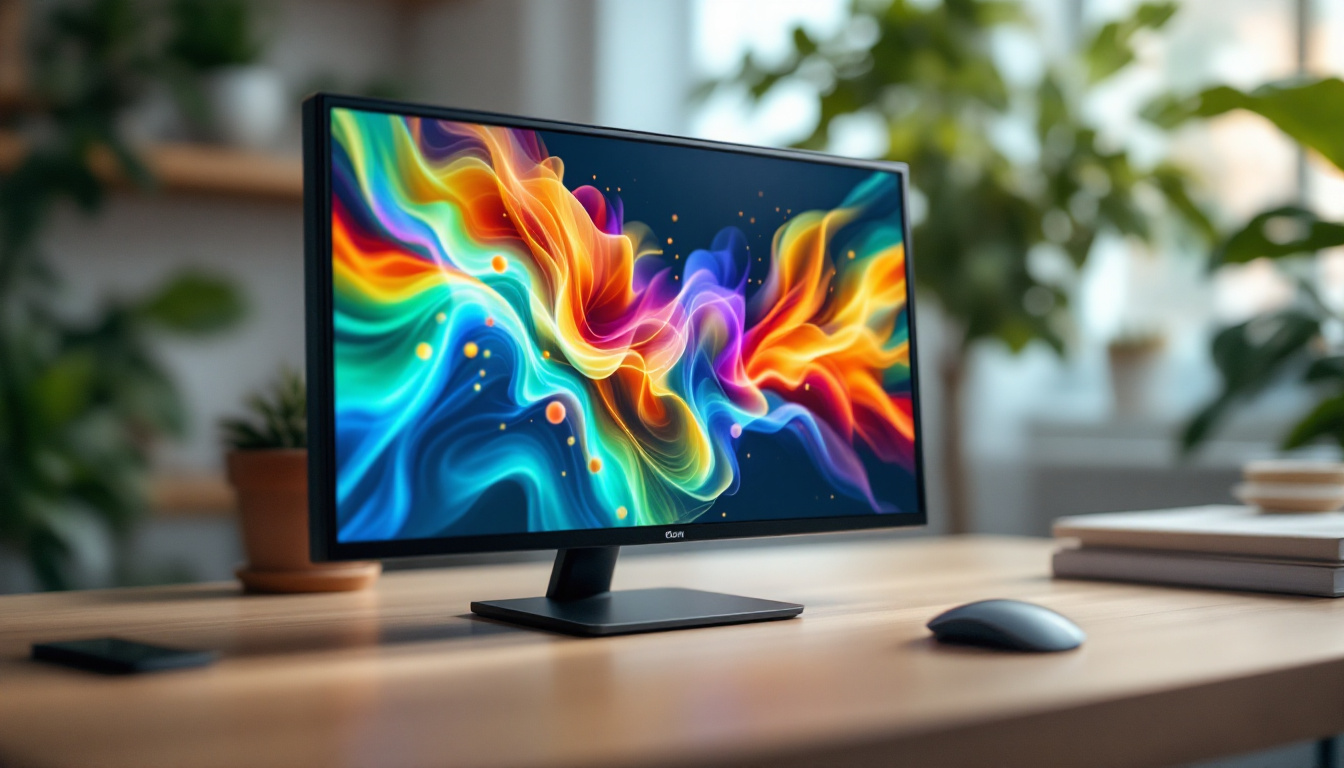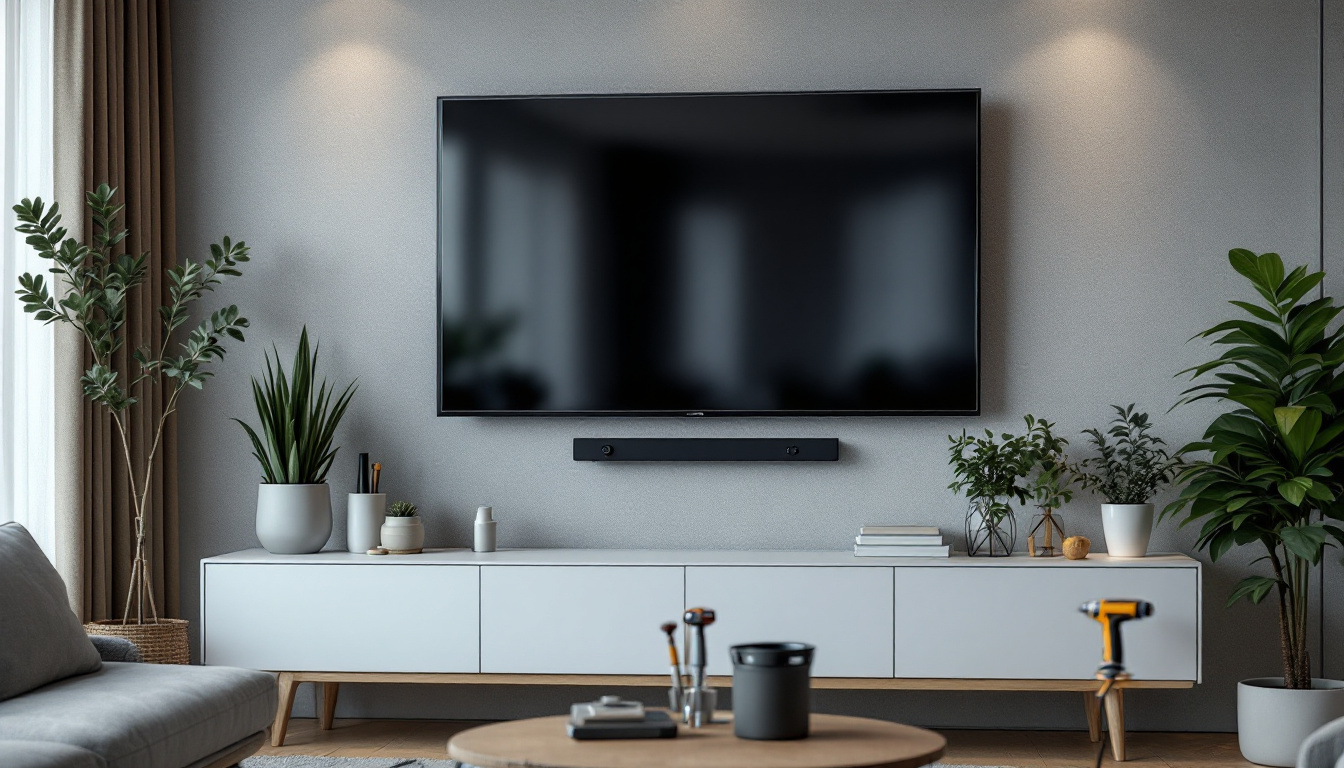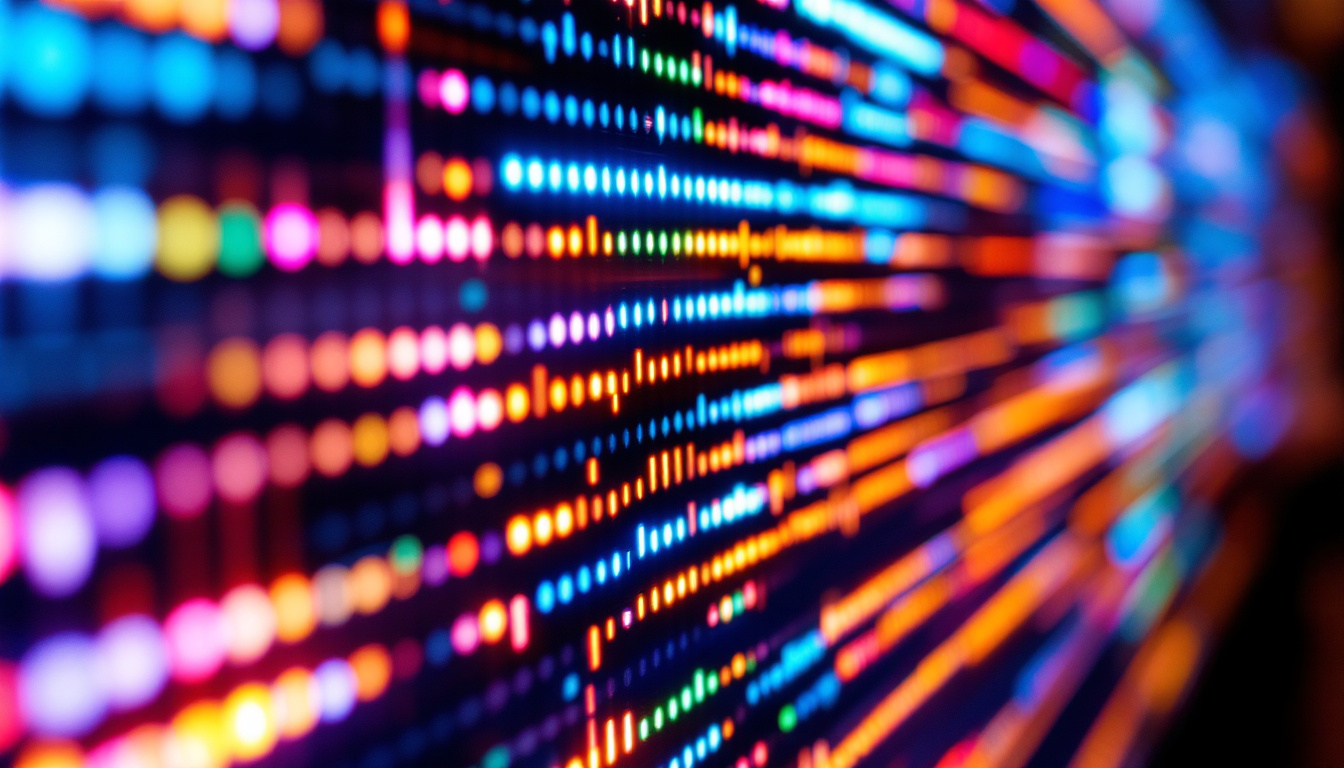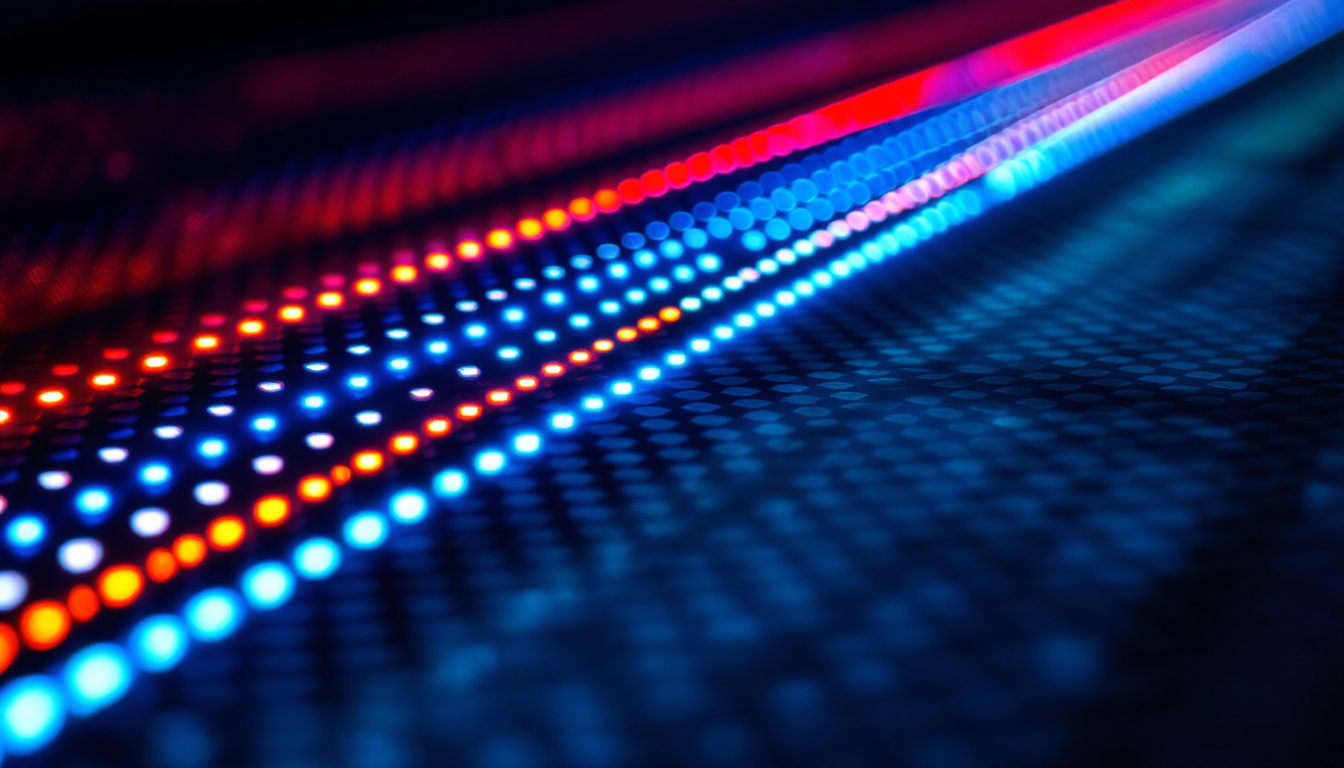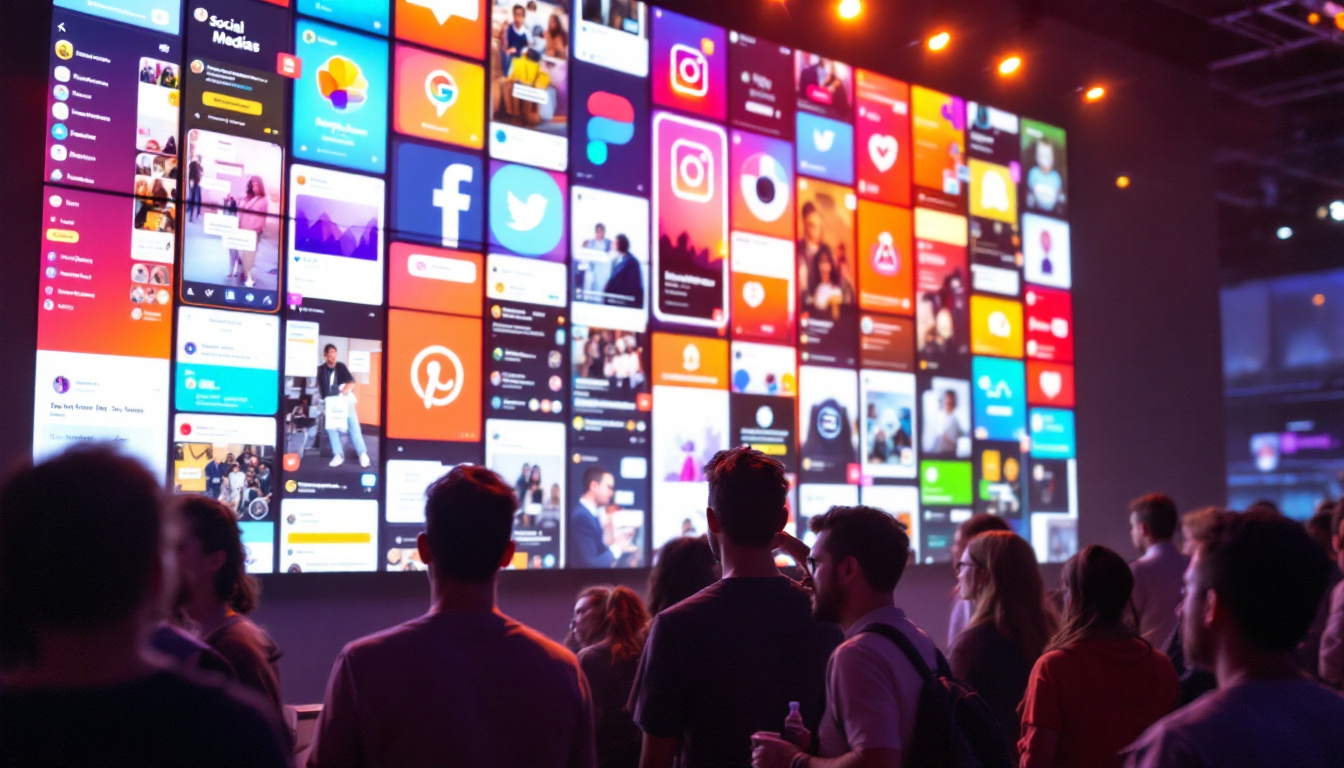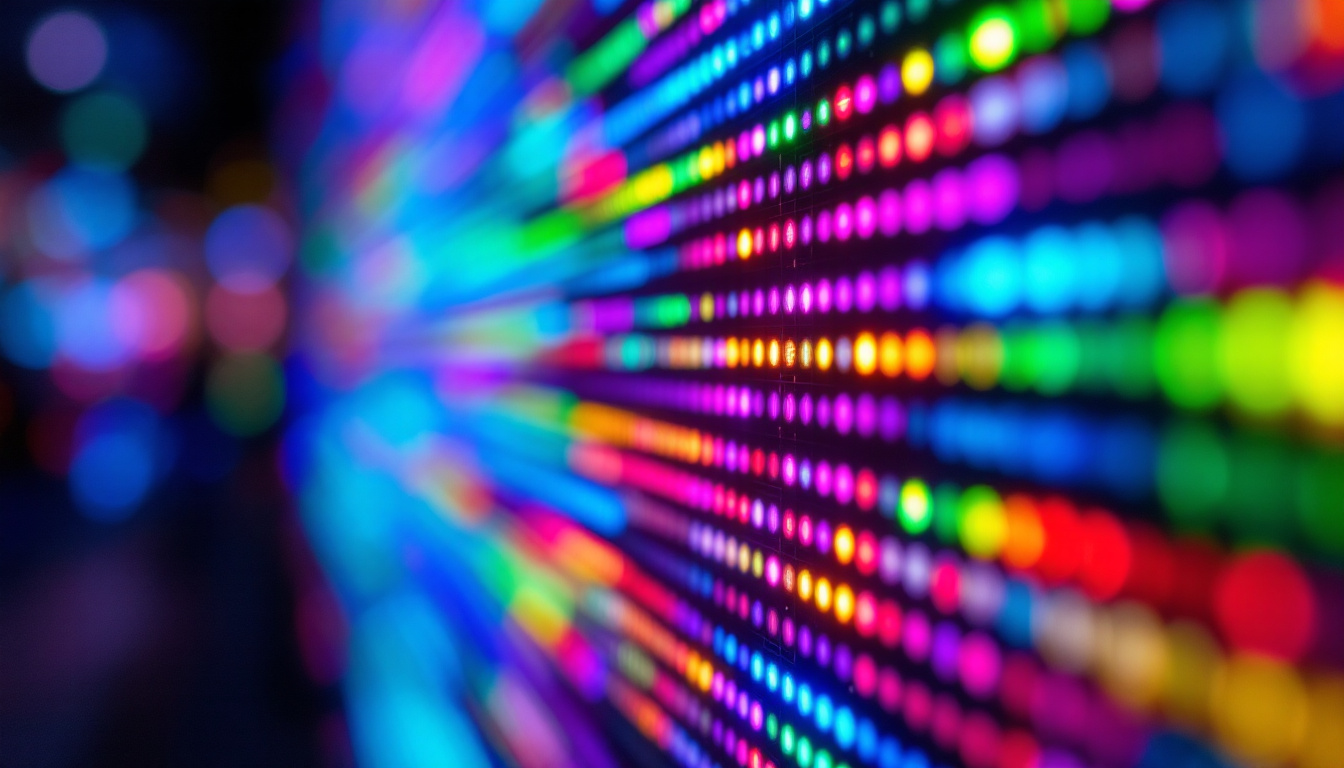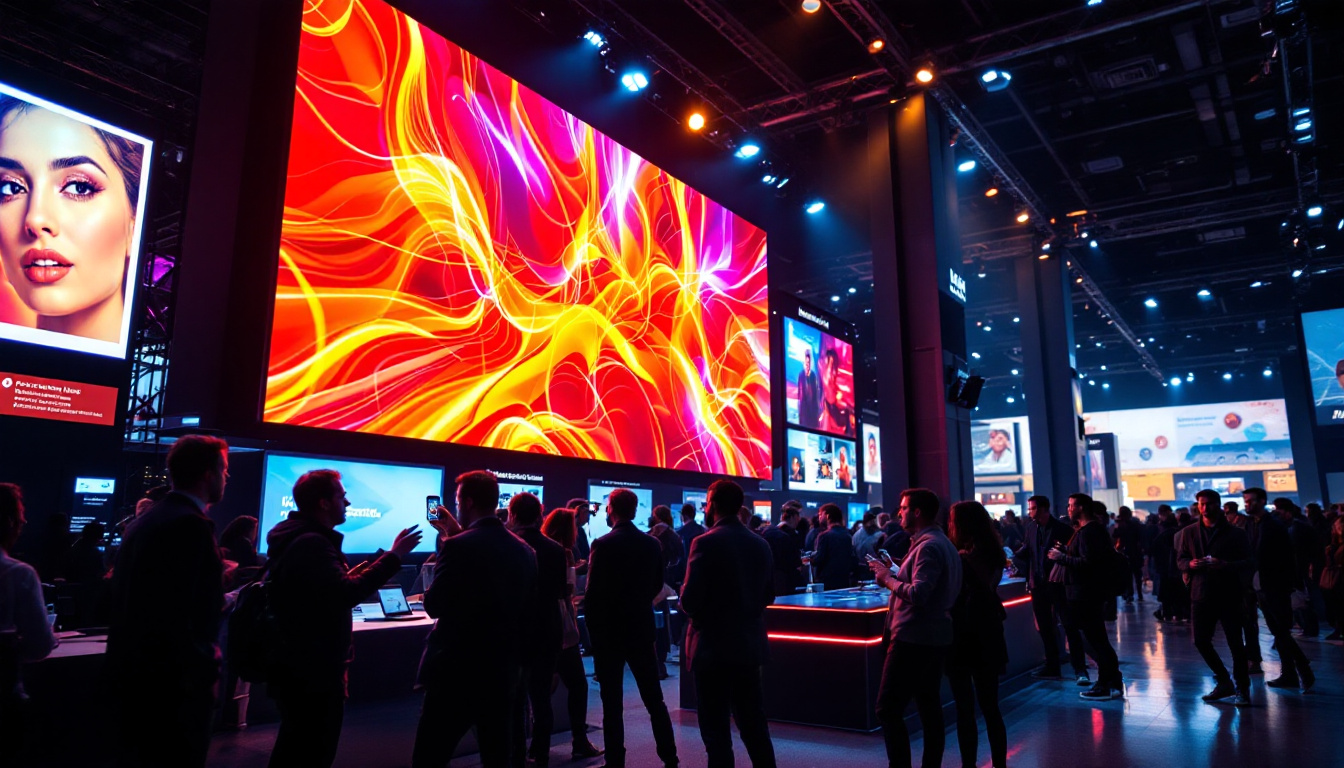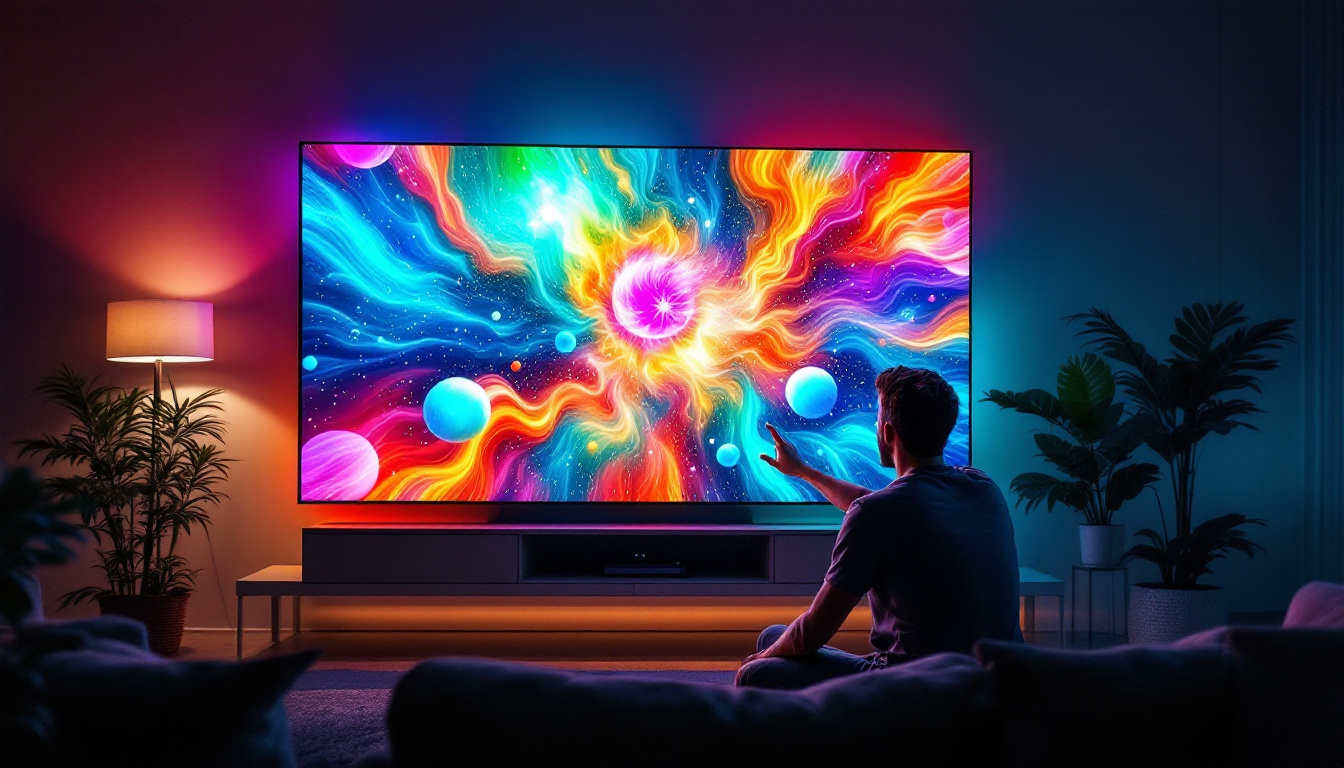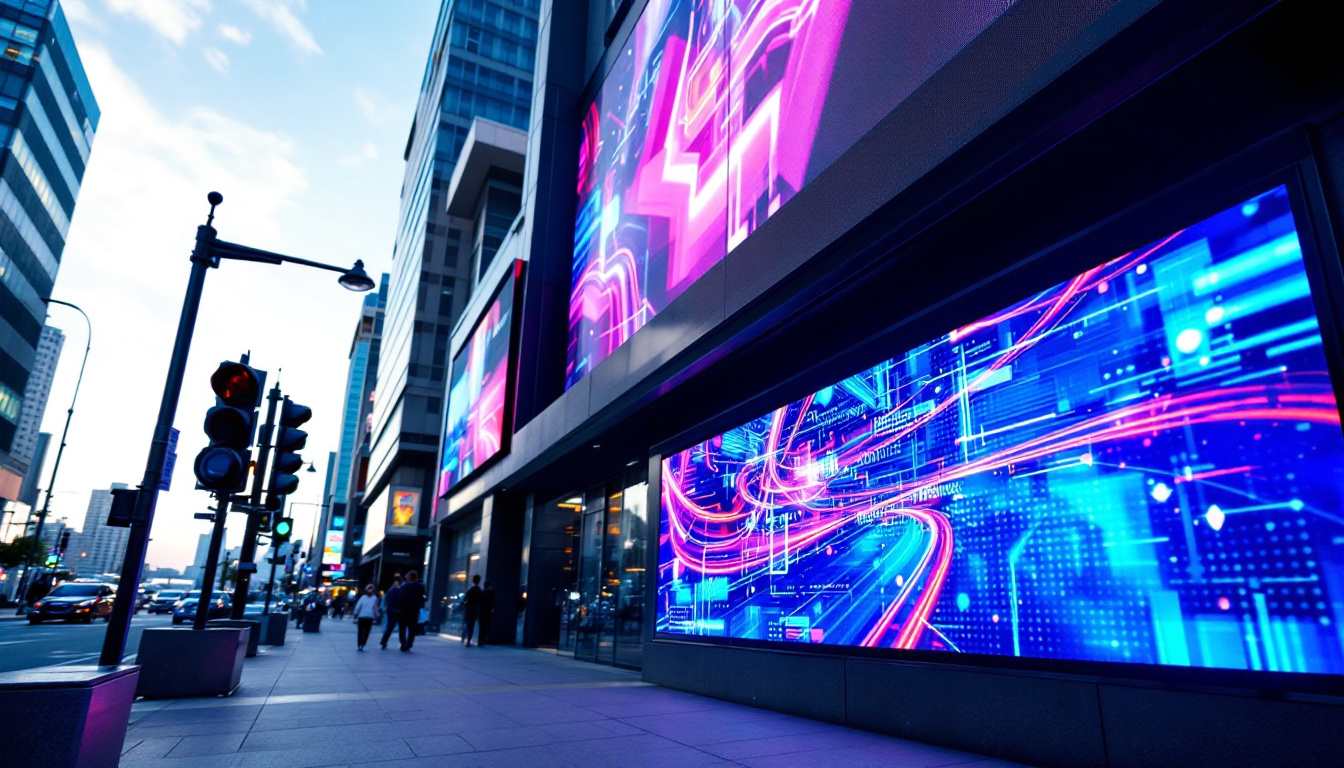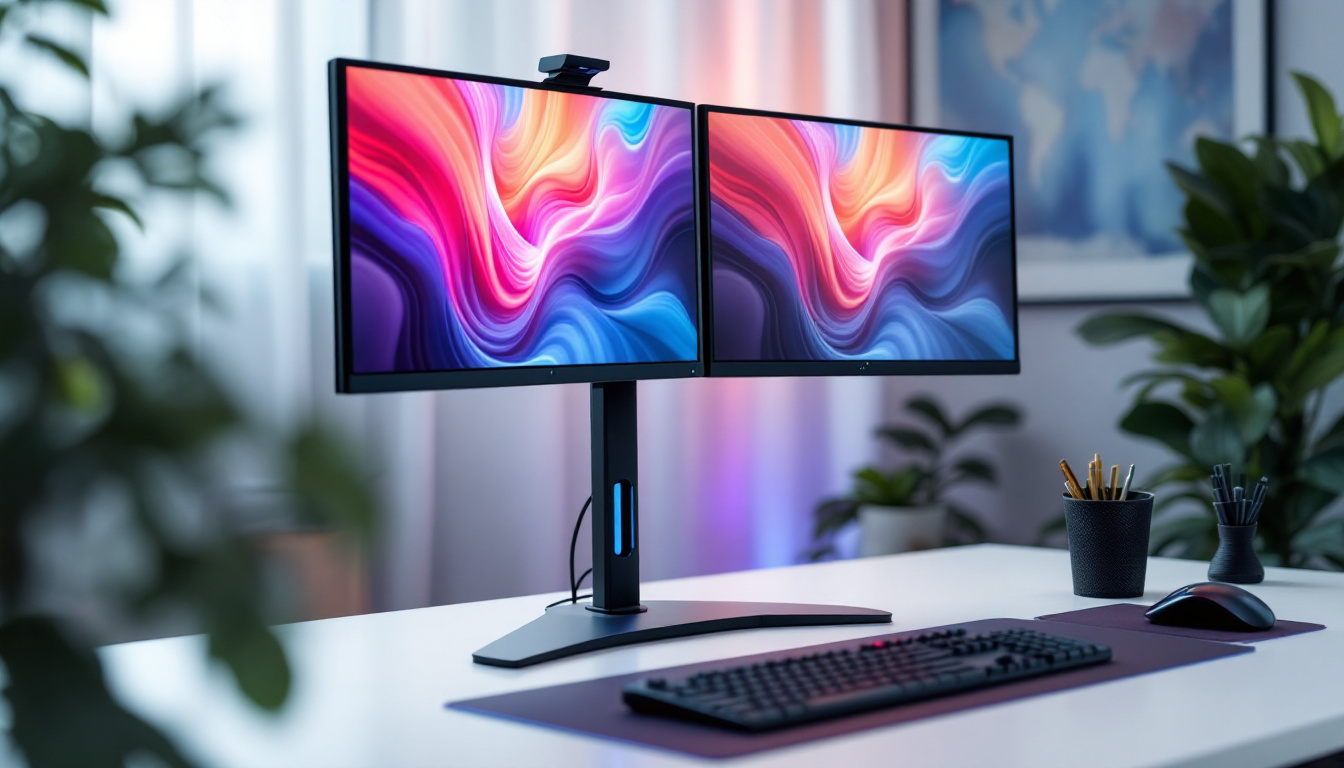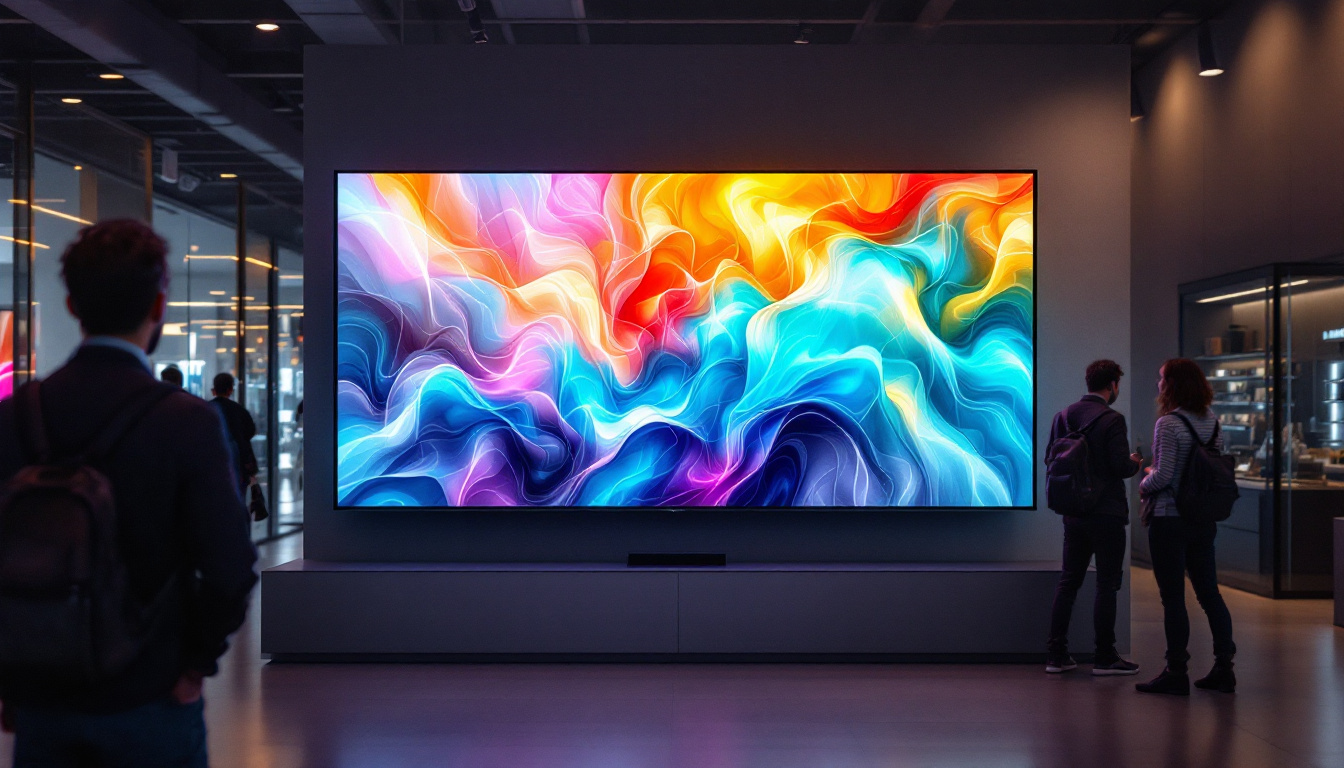Small LED Monitor: LED Display Explained
In the world of technology, the evolution of display technology has been a significant factor in enhancing user experience. Among the various types of displays available today, small LED monitors have gained popularity for their compact size, vibrant colors, and energy efficiency. This article delves into the intricacies of LED displays, focusing on small LED monitors, their advantages, applications, and how they compare to other display technologies.
Understanding LED Technology
LED, or Light Emitting Diode, is a semiconductor device that emits light when an electric current passes through it. This technology is at the heart of modern display systems, including televisions, computer monitors, and handheld devices. The compact nature of LEDs allows for thinner and lighter displays, making them ideal for small monitors. As a result, the evolution of LED technology has paved the way for innovative designs that not only enhance aesthetics but also improve functionality in various applications.
Moreover, the versatility of LED technology extends beyond displays. It is also used in various lighting solutions, from residential to commercial spaces. The ability to create different color temperatures and intensities makes LEDs suitable for mood lighting, task lighting, and even outdoor lighting solutions. This adaptability has led to a significant shift in how we approach lighting design, allowing for smarter, more energy-efficient environments.
How LED Displays Work
LED displays operate on the principle of electroluminescence. When electricity flows through the diode, it excites the electrons, causing them to emit light. In small LED monitors, these diodes are arranged in a grid to form pixels, which can be individually controlled to display a wide range of colors and brightness levels. This pixel control is essential for creating high-definition images and videos, as it allows for precise adjustments that enhance the clarity and vibrancy of the content being displayed.
There are two primary types of LED displays: direct-lit and edge-lit. Direct-lit LED displays have LEDs placed behind the screen, providing uniform brightness across the entire display. Edge-lit displays, on the other hand, have LEDs positioned around the edges, using light guides to illuminate the screen. Each type has its advantages and is suited for different applications. For instance, direct-lit displays are often favored in environments where consistent brightness is crucial, such as in professional video editing suites, while edge-lit displays are popular in consumer electronics due to their slim profiles and lower manufacturing costs.
Benefits of LED Technology
LED technology offers several advantages over traditional display technologies, such as LCD and CRT. One of the most notable benefits is energy efficiency. LED monitors consume significantly less power, which not only reduces electricity bills but also contributes to a lower carbon footprint. This energy efficiency is particularly important in large-scale installations, such as digital billboards and large venue displays, where the cumulative energy savings can be substantial.
Additionally, LED displays provide better color accuracy and contrast ratios. The ability to produce deeper blacks and brighter whites enhances the overall viewing experience, making them ideal for graphic design, gaming, and multimedia consumption. Furthermore, LED monitors have a longer lifespan compared to their counterparts, reducing the need for frequent replacements. This longevity is complemented by advancements in technology, such as the development of organic LEDs (OLEDs), which offer even greater flexibility in design and performance, further pushing the boundaries of what is possible in display technology.
Small LED Monitors: Features and Advantages
Small LED monitors, typically ranging from 15 to 27 inches, are designed for specific use cases where space is a premium. These monitors are favored in various settings, including home offices, retail displays, and portable setups. Understanding their features and advantages can help users make informed decisions when selecting a display.
Compact Design and Portability
One of the standout features of small LED monitors is their compact design. These monitors are lightweight and easy to transport, making them suitable for users who need a display on the go. Whether for business presentations or gaming sessions at a friend’s house, the portability of small LED monitors is a significant advantage.
Moreover, their small footprint allows for efficient use of desk space. In environments where multiple monitors are needed, such as trading floors or design studios, small LED monitors can be arranged in a multi-display setup without overwhelming the workspace.
Enhanced Visual Experience
Small LED monitors deliver impressive visual quality, thanks to their high resolution and vibrant color reproduction. Most models support Full HD (1920×1080) or even 4K (3840×2160) resolutions, providing sharp images and detailed graphics. This makes them ideal for tasks that require precision, such as photo editing or video production.
Furthermore, many small LED monitors come equipped with advanced technologies such as HDR (High Dynamic Range) and wide color gamut support. These features enhance the viewing experience by providing more realistic images with greater depth and detail. Users can enjoy movies, games, and creative work with stunning clarity and color accuracy.
Versatile Connectivity Options
Modern small LED monitors are designed with versatility in mind. They typically offer a range of connectivity options, including HDMI, DisplayPort, and USB-C. This allows users to connect the monitor to various devices, such as laptops, gaming consoles, and even smartphones.
Some models also include built-in speakers and USB hubs, further enhancing their functionality. This versatility makes small LED monitors suitable for a wide range of applications, from casual gaming to professional video editing.
Applications of Small LED Monitors
Small LED monitors are not just limited to home use; they have found applications across various industries. Their compact size and impressive performance make them suitable for a multitude of scenarios.
Home Office and Remote Work
As remote work becomes increasingly common, small LED monitors have emerged as essential tools for home offices. They provide additional screen space for multitasking, allowing users to work more efficiently. Whether for video conferencing, document editing, or research, a small LED monitor can enhance productivity.
Moreover, their ergonomic design helps reduce eye strain, making long working hours more comfortable. With adjustable stands and VESA mount compatibility, users can customize their setup to suit their needs.
Gaming and Entertainment
The gaming community has embraced small LED monitors for their fast response times and high refresh rates. Gamers benefit from reduced motion blur and smoother gameplay, which can be crucial in competitive gaming scenarios. Many small LED monitors also feature adaptive sync technologies, such as AMD FreeSync or NVIDIA G-Sync, further enhancing the gaming experience.
In addition to gaming, small LED monitors are perfect for streaming movies and shows. Their vibrant colors and high resolutions make them an excellent choice for home theaters or casual viewing setups. With the rise of portable gaming consoles, small LED monitors can serve as external displays, providing a larger screen for an immersive experience.
Retail and Digital Signage
In retail environments, small LED monitors are used for digital signage, advertising, and product displays. Their bright and colorful visuals attract customers’ attention, making them effective marketing tools. Retailers can easily update content remotely, ensuring that promotions and information are always current.
Additionally, small LED monitors can be used in kiosks or information points, providing customers with interactive displays that enhance their shopping experience. The compact nature of these monitors allows them to fit seamlessly into various store layouts.
Choosing the Right Small LED Monitor
With a plethora of options available in the market, selecting the right small LED monitor can be a daunting task. Several factors should be considered to ensure that the chosen monitor meets the user’s specific needs.
Screen Size and Resolution
When choosing a small LED monitor, the screen size and resolution are critical factors. Users should consider how much desk space is available and the intended use of the monitor. For general office tasks, a 21-inch monitor with Full HD resolution is often sufficient. However, for creative work or gaming, a larger screen with higher resolution may be preferable.
Additionally, users should evaluate the pixel density, as higher pixel density results in sharper images. For example, a 27-inch monitor with 4K resolution offers a significantly better visual experience than a 1080p display of the same size.
Panel Type
The panel type of a small LED monitor can greatly affect its performance. There are three primary types of panels: IPS (In-Plane Switching), TN (Twisted Nematic), and VA (Vertical Alignment). IPS panels are known for their excellent color accuracy and wide viewing angles, making them ideal for creative work. TN panels, while typically faster and cheaper, often suffer from poorer color reproduction. VA panels offer better contrast but may have slower response times.
Choosing the right panel type depends on the user’s specific needs. For gamers, a TN panel may be suitable for its fast response times, while professionals in design or photography may prefer an IPS panel for its superior color accuracy.
Connectivity and Features
Connectivity options are another crucial consideration when selecting a small LED monitor. Users should ensure that the monitor has the necessary ports to connect to their devices. HDMI and DisplayPort are standard connections, but USB-C has become increasingly popular due to its versatility.
Additional features such as built-in speakers, adjustable stands, and VESA mount compatibility can enhance the overall user experience. Monitors with blue light filters and flicker-free technology can also help reduce eye strain during extended use.
Conclusion
Small LED monitors offer a blend of portability, performance, and versatility, making them an excellent choice for a wide range of applications. From enhancing productivity in home offices to providing immersive gaming experiences, these monitors have proven their worth in various settings.
As technology continues to evolve, small LED monitors are likely to become even more advanced, incorporating features such as higher resolutions, improved color accuracy, and enhanced connectivity options. For anyone in the market for a new display, understanding the benefits and applications of small LED monitors can lead to a more informed and satisfying purchase.
In summary, whether for work, gaming, or retail, small LED monitors stand out as a practical and efficient solution for modern display needs. Their compact design and impressive performance make them a valuable addition to any setup.
Discover LumenMatrix’s Advanced LED Display Solutions
Ready to elevate your visual experience with the latest in LED technology? Look no further than LumenMatrix, a pioneer in crafting immersive and dynamic LED displays for every application. Whether you’re seeking to boost your home office setup, create an engaging retail environment, or take your gaming and entertainment to new heights, LumenMatrix has a solution tailored to your needs. From Indoor and Outdoor LED Wall Displays to innovative LED Sports and Floor Displays, our products are designed to captivate and communicate with unparalleled clarity. Don’t miss out on the opportunity to transform your space. Check out LumenMatrix LED Display Solutions today and step into a world of vivid colors and stunning visuals.

